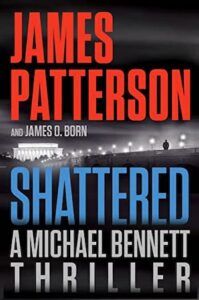
What Is The Difference Between Mystery, Suspense, and Thriller Novels?
The mystery genre is full of different ways to seek the truth — or at least the facts — pertaining to a crime. During the COVID pandemic, I discovered a love of mystery novels, especially on audio, and particularly of the “cozy” variety. In becoming a connoisseur, I have often wondered what separates the three main categories of “mystery” from one another. I’ve done some research and, not being the only person who has this question, found some answers! Whether they are satisfying or not is a different matter, naturally. For the purposes of this discussion, I’m breaking down the overall mystery genre into three main categories: mystery, suspense, and thriller.
Mystery
A traditional mystery novel follows a detective of some sort, either amateur or professional, while they attempt to solve a crime. The reader usually follows the detective, discovering clues along with the characters. The detectives themselves are not usually in any real danger from the antagonist, and are often completely disconnected from the crime. The most famous of detectives in Western literature is, of course, Sherlock Holmes, who debuted in Beeton’s “Christmas Annual” in 1887 in as the protagonist of A Study in Scarlet. Other excellent examples include The Red Queen Dies by Frankie Y. Bailey, The Unquiet Dead by Ausma Zehanat Khan, and A Spy in the House by Y. S. Lee.
Thriller
Thrillers take the basic tenets of a mystery novel and add an element of danger to the protagonist, who may or may not be a detective in the traditional sense. Often this sub-genre’s heroes are not trained detectives but do have some specialized knowledge; here are your Temperances Brennan (of both the novel series, starting with Déjà Dead, and Bones fame), your Dexters Morgan (starting with the novel Darkly Dreaming Dexter and also the television show Dexter). One of the interesting things about books labeled as “thrillers” is that they do seem to be turned into television shows or movies more often than the other two genres. Perhaps it is that people prefer to be “thrilled” instead of “in suspense?” Whatever the reason, if you’re an author who plans to write in the mystery genre, leaning into the description of “thriller” (if not the definition given here) might help you get that sweet, sweet options money.
Suspense
Suspense novels are somewhat more rare as a standalone sub-genre, but still popular. While mysteries and thrillers are usually told from either the point of view or the perspective of the protagonist (first person present/past or third person present/past with a single focus, respectively), narration in suspense stories is less defined. This is because suspense involves the reader knowing more than the protagonist, which we can only do if the narration is either omniscient or multi-perspective — that is, told from the point of view of more than one character. Suspense novels also employ time skipping in the narration; they often start either in media res or at the end, but with crucial details left out. An excellent example is Liane Moriarty’s Big Little Lies, a book that starts with the death of a character and then wheels back in time to figure out how it happened, bringing together the experiences of all the key characters. You probably already know that Big Little Lies is also a television show, with season 1 covering the events in the novel.
In reality, most often the three sub-genres all converge, sometimes in a single novel, and sometimes in a series. Sherlock Homes is not in danger in A Study in Scarlet, but as one continues through his story, told from the single perspective of Dr. John Watson, the danger to Holmes becomes clear with the introduction of his arch nemesis, Moriarty. Similarly, Dexter Morgan’s real drama begins when he encounters a killer who is patterning themselves after his work in order to get close to him; his work as a “detective” character is all prior to his story. And of course, there is no official definition of any of these, just as there is no true definition of any fiction genre. We come to a genre with an expectation: mysteries will be solved eventually, romances will move tantalizingly toward a realization of love, etc. And while those expectations are entirely justified, readers tend to make a book popular when it subverts its genre a little bit.
One of the subversions we are seeing is in the cozy mystery sub-genre, where the crimes happen off screen and there is a tradition of no swearing and no sex. Readers are expressing more interest in cozies that, while still following a comfortable formula, allow for more adult themes.
When it comes to defining whether a book is a mystery, thriller, or a suspense, the real question is: what will readers gravitate toward? And the answer seems to be that books labeled “thriller” or “thrilling” tend to do better than books labeled as “mystery” or “suspense.” So while it’s helpful to know the categories, in the end, it’s up to you as the reader to read liberally across genres and tropes, then decide what you like best.
Also In This Story Stream
- 8 Mystery/Thriller TikTokers to Follow Right Now
- Why CLUE is the Perfect Mystery
- The Role of Wills and Testaments in Mystery Novels
- How Gothic Romance Led to Contemporary Romantic Suspense Novels
- Please, Tell Me More: 8 Books Where The Mystery Is Revealed First
- Start with Mysteries, Thrillers, & True Crime If You’re New to Audiobooks
- A Map to the Best Treasure Hunting Mysteries
- The Best Mystery Books Featuring Dogs
- 10 Mystery/Thriller BookTube Channels You’ve Got to Follow
- 10 Cozy Mysteries for a Gentle Thrill (+ a Bonus!)











